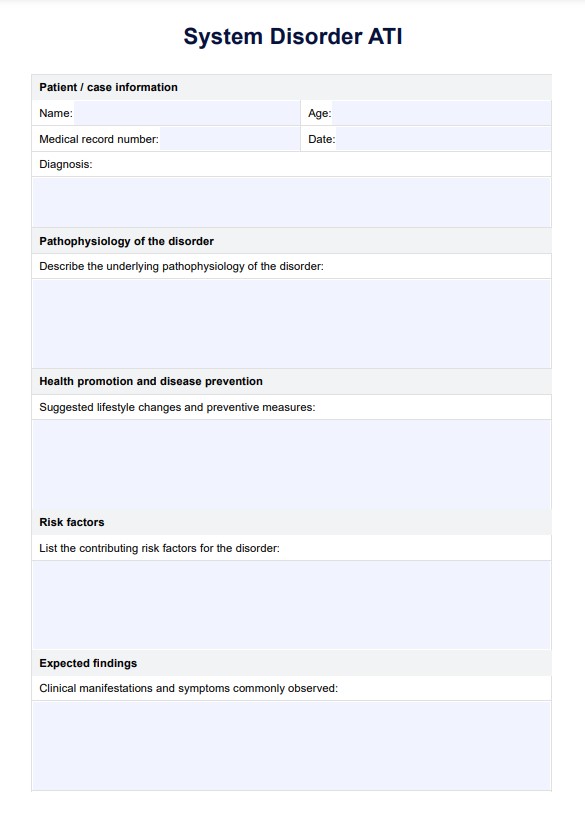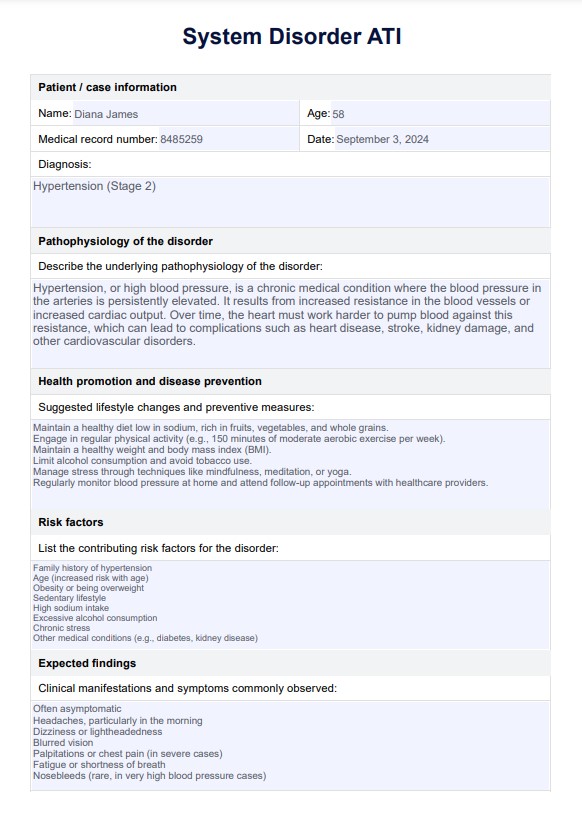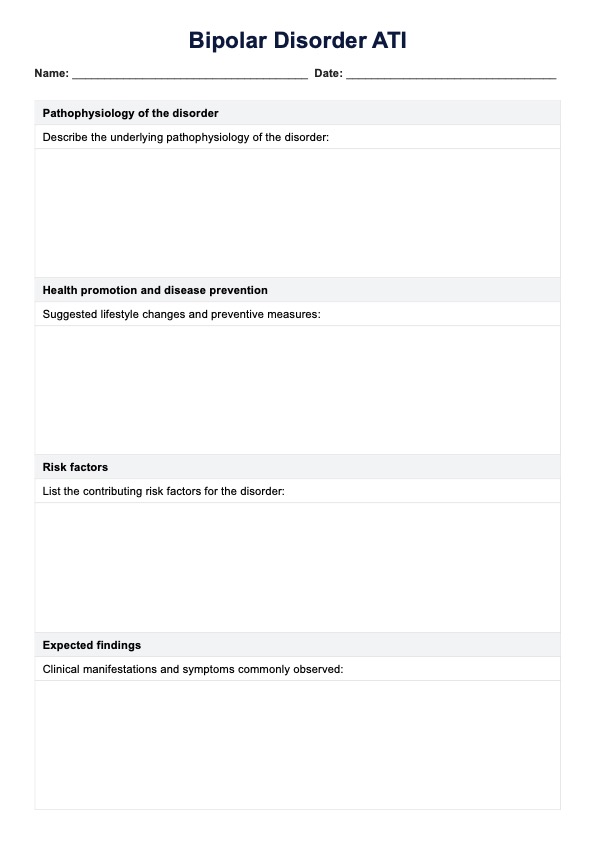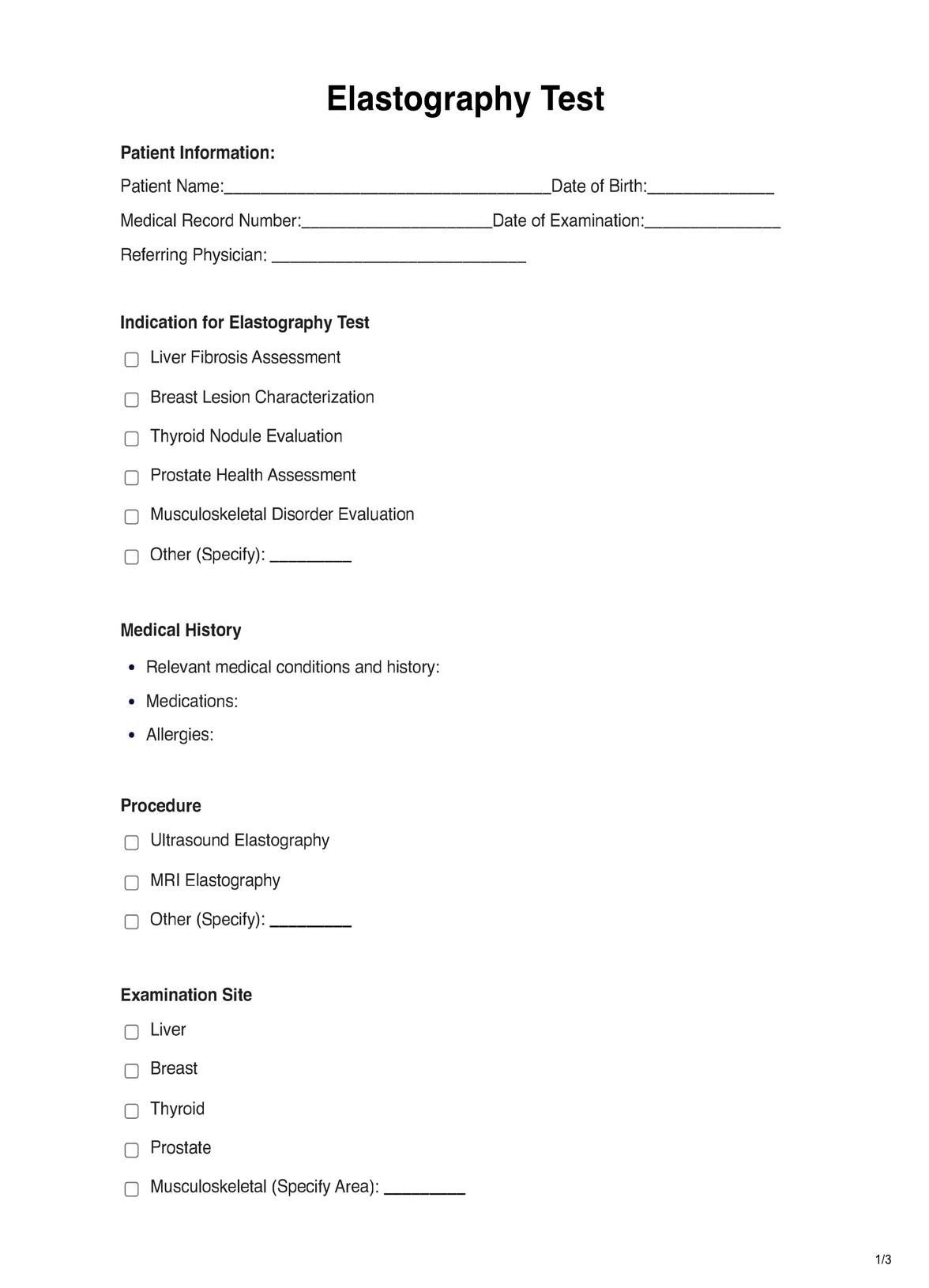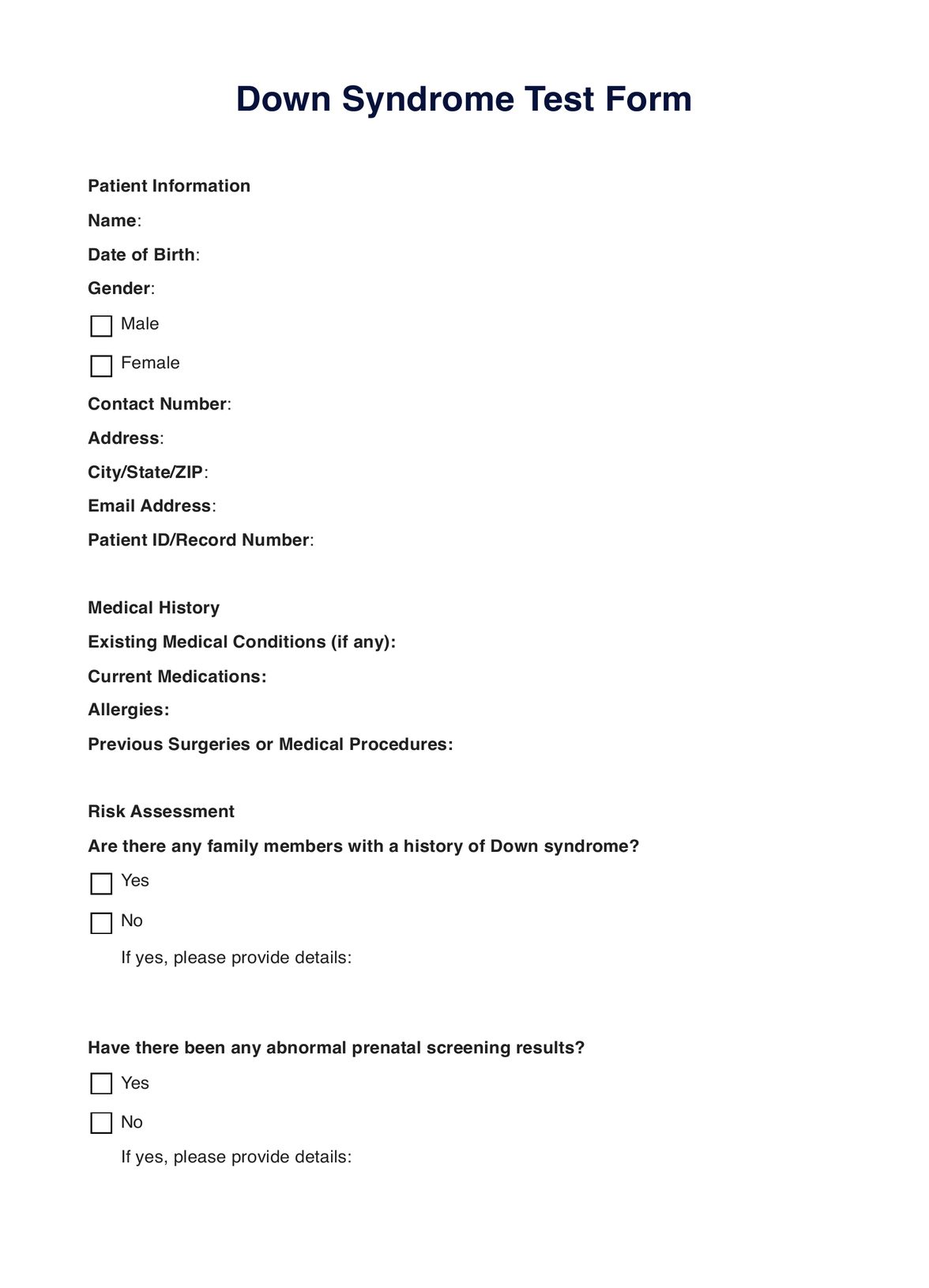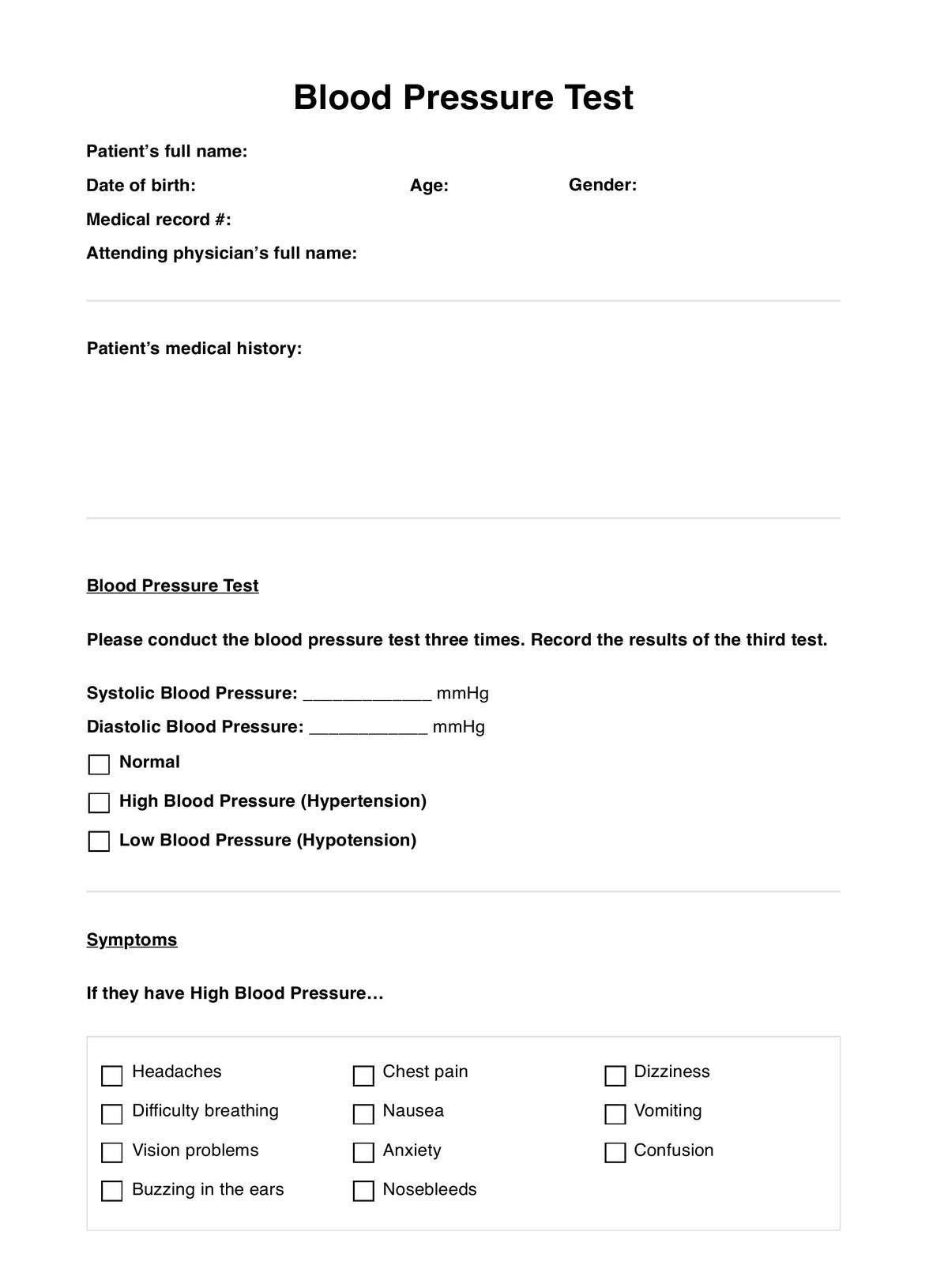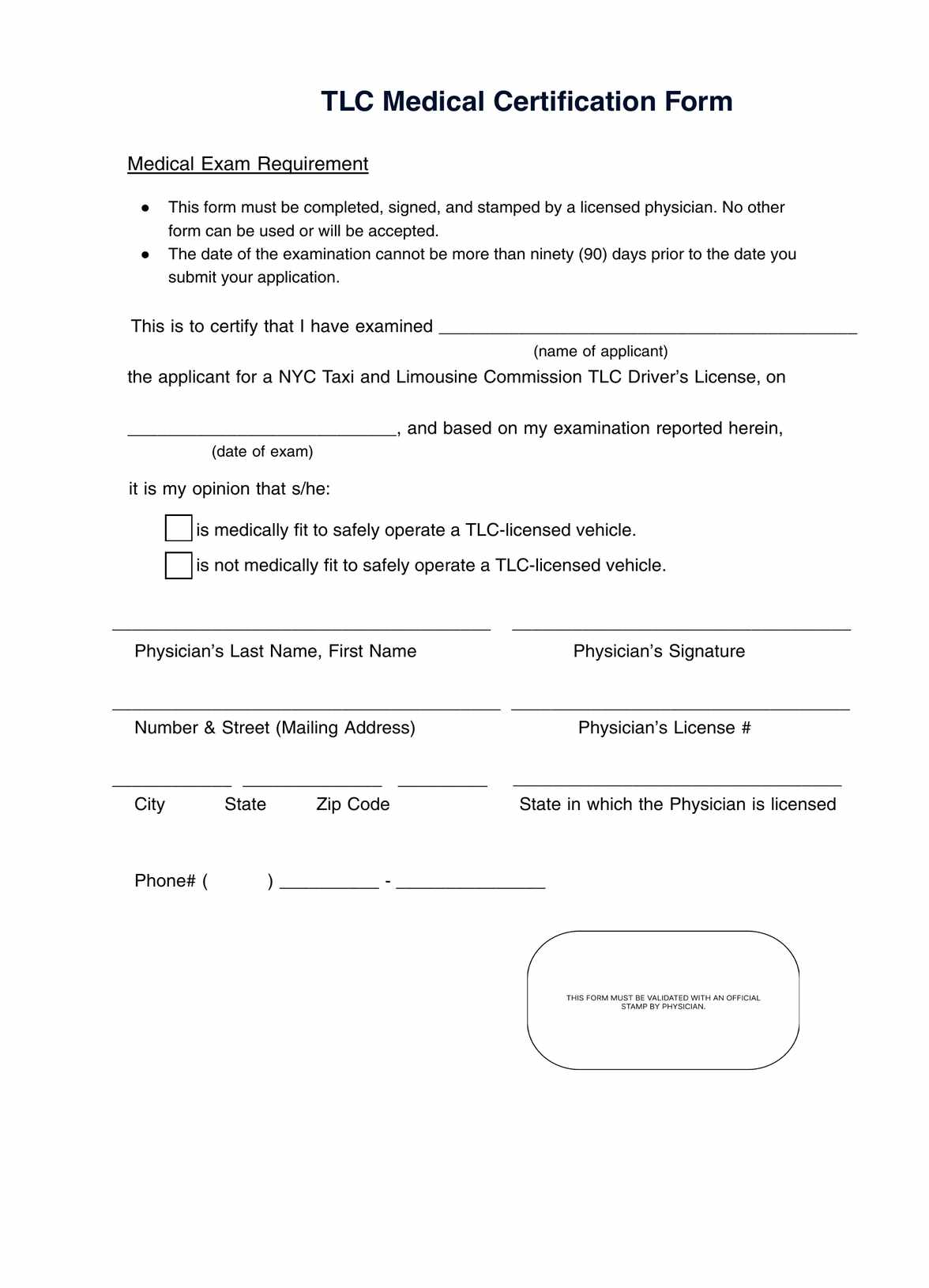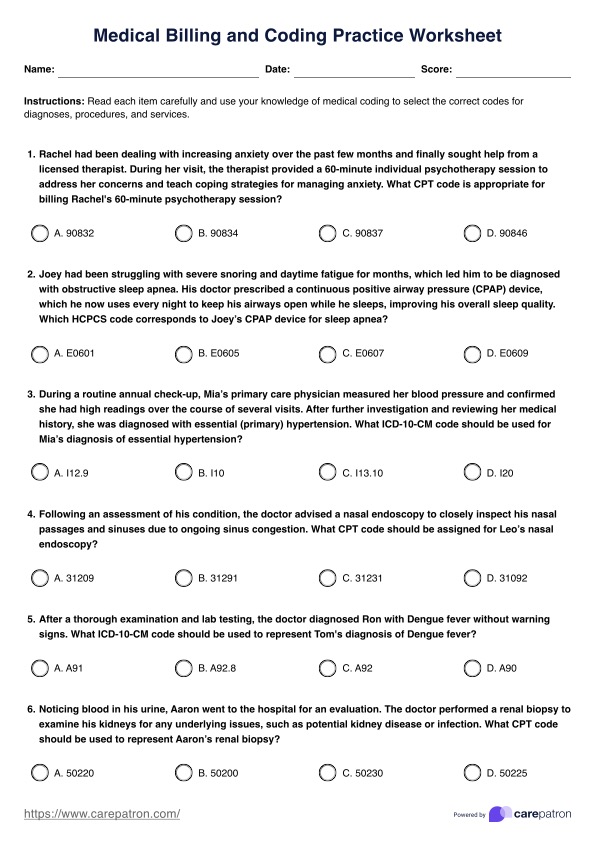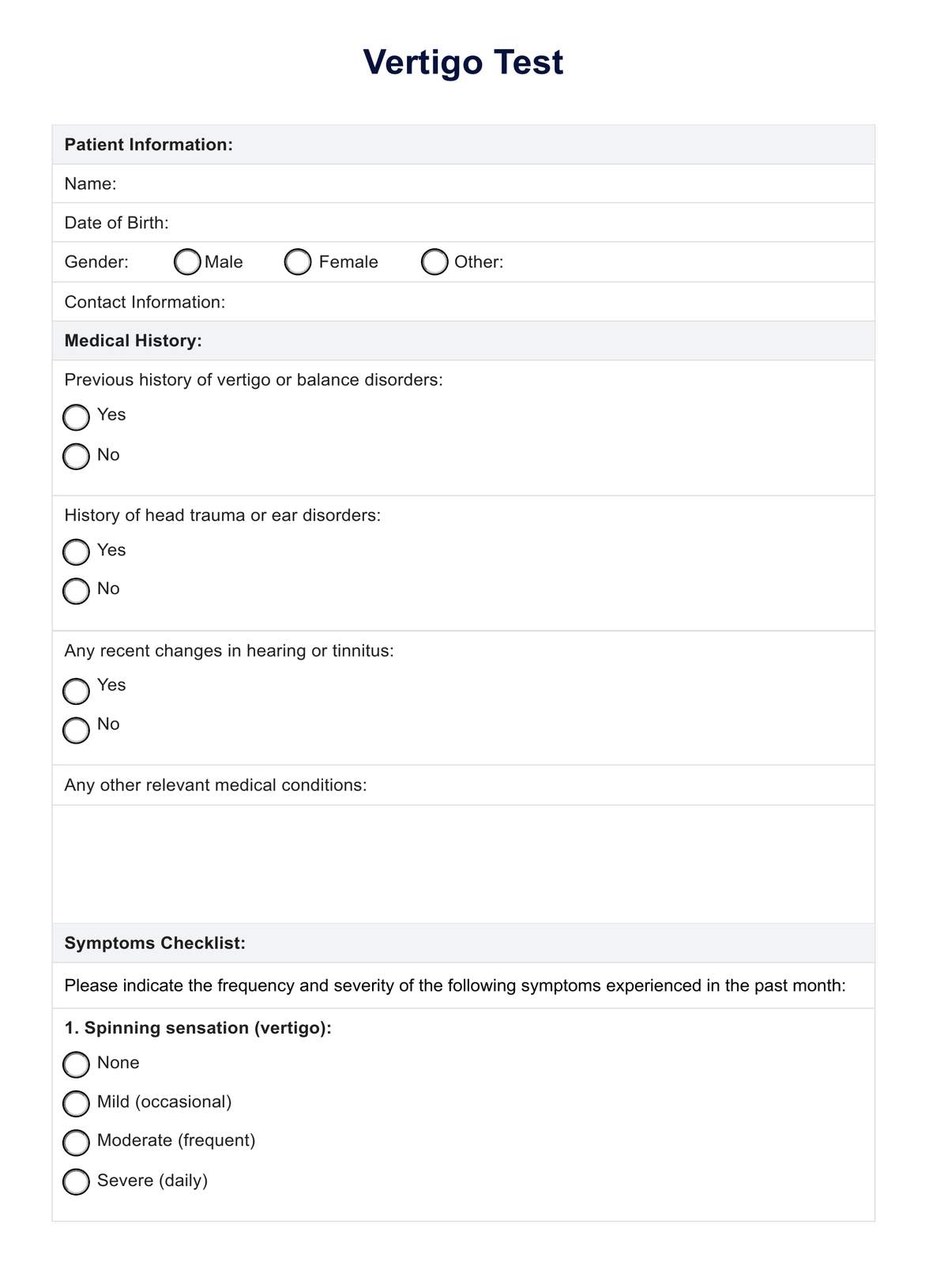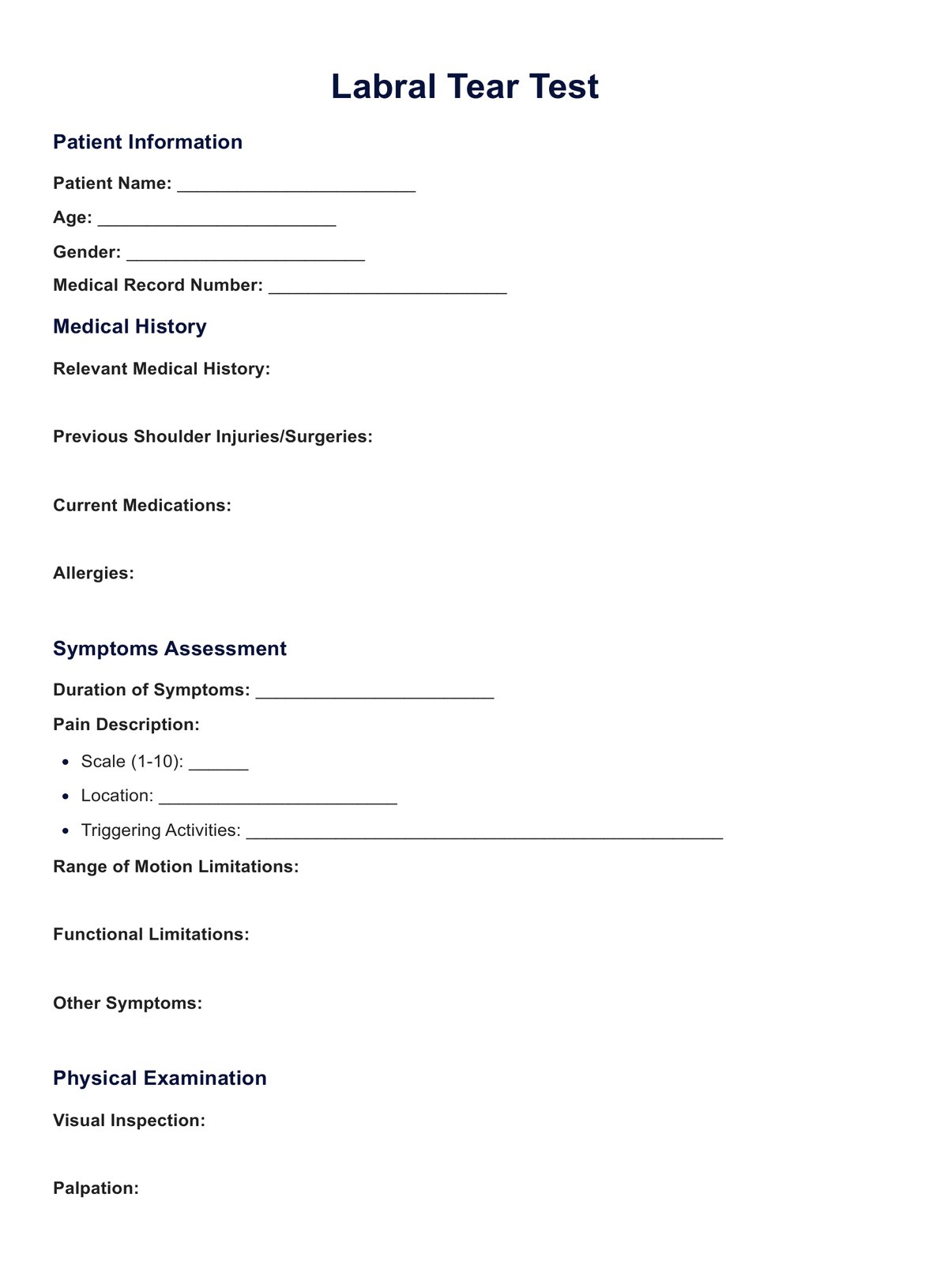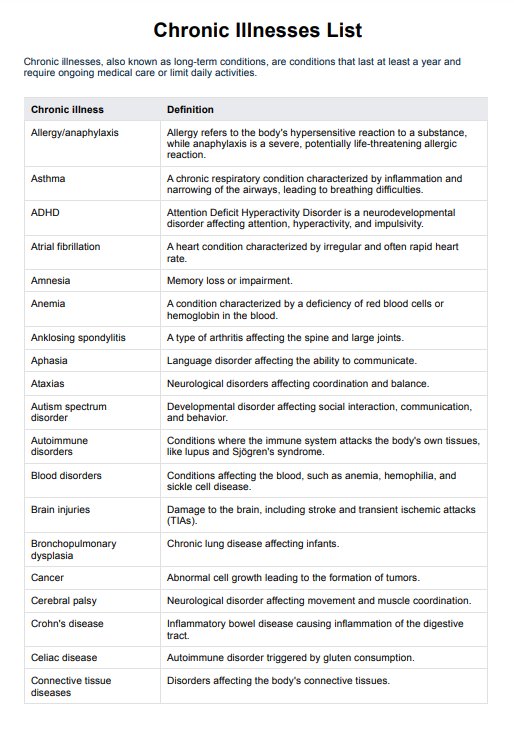System Disorder ATI
Try Carepatron's System Disorder ATI Template for streamlined management of medical conditions in education and healthcare.


What is a System Disorder ATI template?
The System Disorder ATI Template is indispensable in nursing and healthcare education. It assists learners in comprehensively understanding and documenting various system disorders.
This ATI active learning template is pivotal for studying diabetes mellitus, cardiovascular diseases, neurological conditions, etc., as it offers a structured approach to dissecting specific disorders' pathophysiology, clinical manifestations, diagnostic criteria, and treatment options.
Each part of the template focuses on a different aspect of the disorder, allowing for a detailed study of its nature, symptoms, progression, and management. This systematic approach enhances the understanding and retention of vital concepts related to various system disorders.
Using the ATI System Disorder Template extends beyond mere information cataloging. It fosters active learning by encouraging students and practitioners to engage deeply with the material. This engagement is critical in developing essential skills such as critical thinking and clinical reasoning, helping them focus on effective patient care.
System Disorder ATI Template
System Disorder ATI Example
How does this System Disorder ATI Template work?
Like other active learning templates, our System Disorder ATI Template is easy to fill out in PDF format or through Carepatron's HIPAA-compliant online forms software, which can be accessed through a computer or mobile device. Here are the instructions for using the ATI system disorder template:
Step 1: Access the System Disorder ATI Template
Log into your Carepatron account to begin using the system disorder ATI template. This template is designed to streamline the documentation of various system disorders by providing a structured format for healthcare practitioners.
Step 2: Input patient/case information
In the fillable fields, fill in the patient’s details, including name, age, medical record number, and diagnosis. This section accurately identifies and tracks the patient’s specific system disorder. It sets the foundation for the entire assessment, ensuring that all subsequent information is correctly attributed to the patient.
Step 3: Describe pathophysiology and risk factors
In the pathophysiology of the disorder section, describe the underlying pathophysiology, explaining how the disorder affects the body. Next, list the risk factors associated with the system disorder. Identifying these risk factors is crucial in understanding the patient's condition and tailoring interventions.
Step 4: Document clinical findings and tests
Enter the expected findings, including clinical manifestations and symptoms typically observed in the specific system disorder. Follow this by detailing relevant laboratory and diagnostic tests that aid in diagnosing the disorder. Accurate documentation of these elements is vital for guiding treatment decisions.
Step 5: Outline treatment and patient education
Complete the template by outlining medications, therapeutic procedures, and nursing interventions associated with the ATI system disorder. Include key patient education points and detail the involvement of other healthcare professionals in interdisciplinary care. Finally, establish criteria for evaluating the treatment plan’s effectiveness, ensuring comprehensive care management.
What do the answers mean for patient education?
Completing our free System Disorder ATI Template yields a detailed and comprehensive overview of a specific system disorder. This overview includes a deep dive into the pathophysiology, symptoms, diagnostic methods, and treatment options for body system disorders. For healthcare professionals, these answers are crucial in several ways:
Enhanced patient care
A thoroughly completed template indicates a robust understanding of the disorder, vital for developing effective patient care strategies. It ensures that healthcare providers can make informed treatment plans and patient education decisions.
Educational value
The results reflect students' grasp of the disorder, highlighting areas for further study. It is a self-assessment tool that helps them identify their strengths and weaknesses in understanding different medical conditions. Educating patients about environmental triggers is vital in managing chronic conditions.
By using this ATI system disorder template, healthcare providers can identify and communicate potential environmental risks that could exacerbate the patient’s condition. This proactive approach helps patients avoid triggers and maintain better health outcomes.
Research and development
The template's results can provide insights into the disorder's prevalence and characteristics in research settings. This information can be instrumental in developing new treatment methods or healthcare policies.
Accurate medication and treatment adherence
The ATI system disorder template outlines specific medications and treatments for patient education. Educating patients on the importance of following prescribed nursing interventions and conducting regular blood glucose checks ensures adherence to treatment plans. This not only improves patient outcomes but also reduces the likelihood of complications.
Personalized patient care
By completing the ATI system disorder template, healthcare providers can offer personalized education that addresses each patient's unique needs. This tailored approach considers the patient’s specific system disorder, genetic predispositions, and lifestyle factors, leading to more effective and targeted patient education. Personalized care enhances patient engagement, improving compliance and overall health management.
Commonly asked questions
Identify the specific system disorder you are documenting to create an ATI template system disorder. Include sections for pathophysiology, risk factors, nursing interventions, and expected findings. Add any relevant diagnostic tests, such as a blood glucose check if applicable, and account for genetic predisposition or environmental triggers.
System disorder ATI templates are used when a comprehensive and structured approach is needed to document and manage a patient’s condition. They are particularly useful when dealing with complex cases involving genetic predisposition. These templates help healthcare professionals systematically record information on system disorders, such as diabetes, where frequent blood glucose checks are necessary.
System disorder ATI templates document key aspects of a patient's condition, guiding healthcare professionals in delivering comprehensive care. The ATI system disorder template includes sections on pathophysiology, nursing interventions, and diagnostic tests, such as a blood glucose check for diabetes. These templates help identify genetic predispositions and environmental triggers, ensuring a holistic approach to managing the disorder. Following the ATI diagnostic template, practitioners can systematically assess the patient’s needs, track progress, and adjust treatment plans, ensuring the most effective interventions for each specific system disorder.

.jpg)
